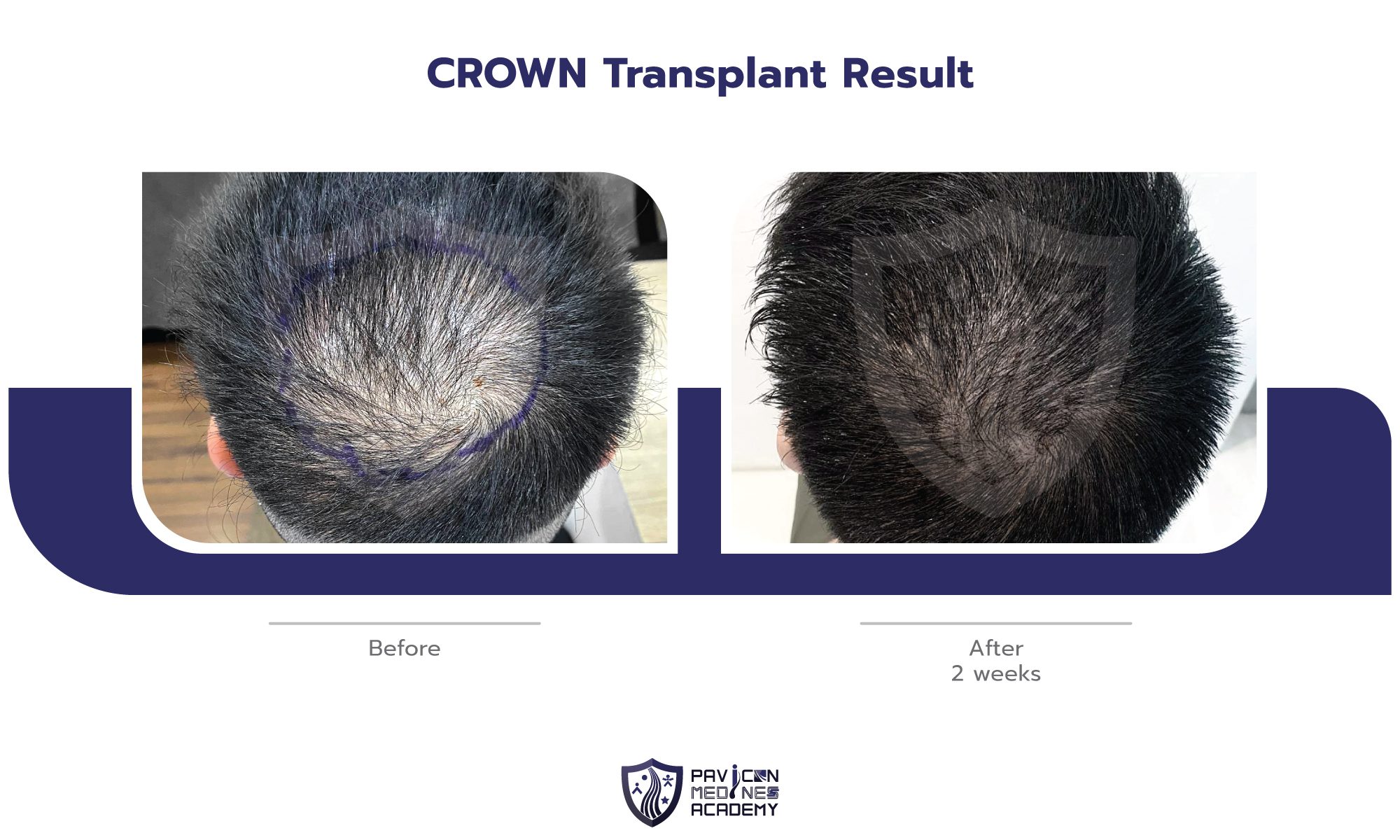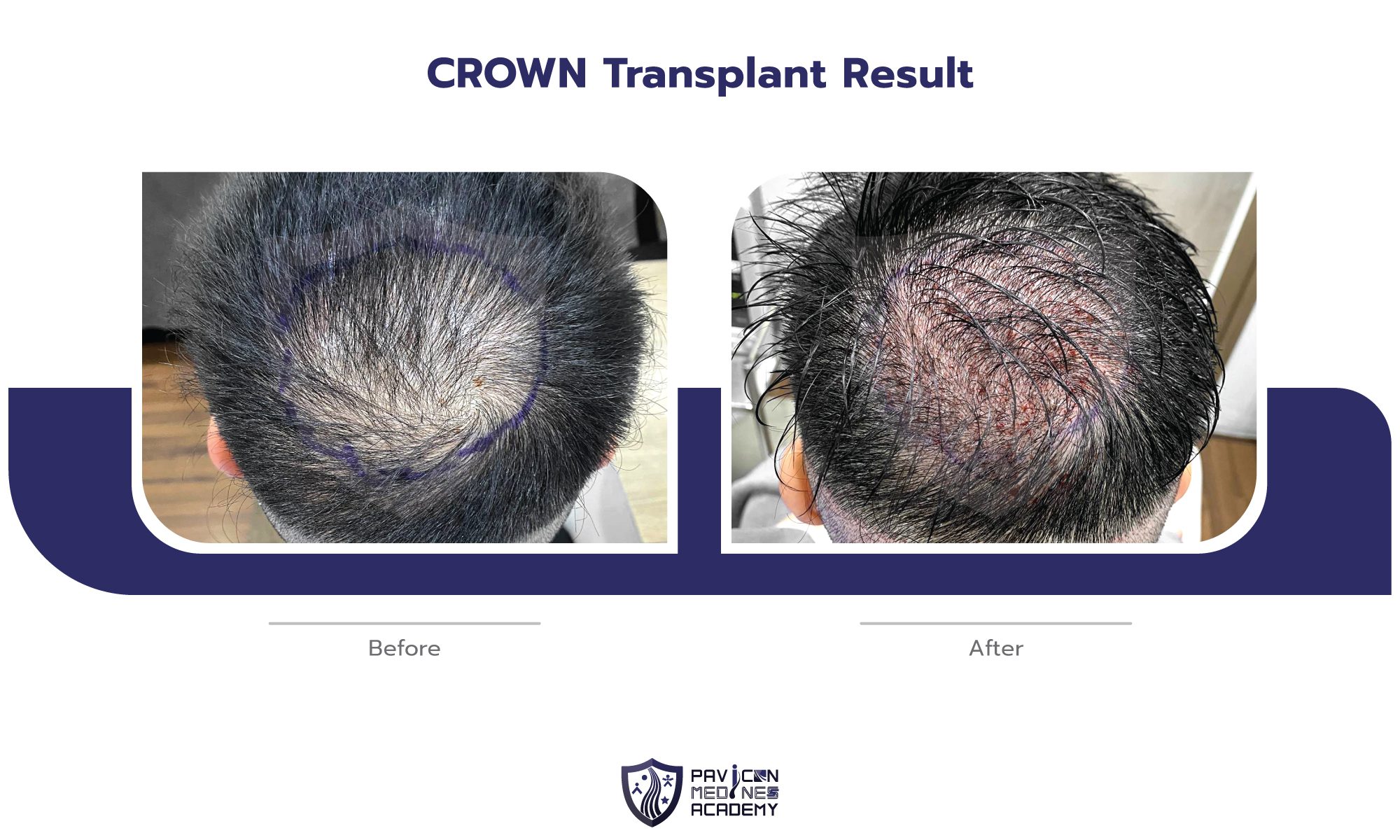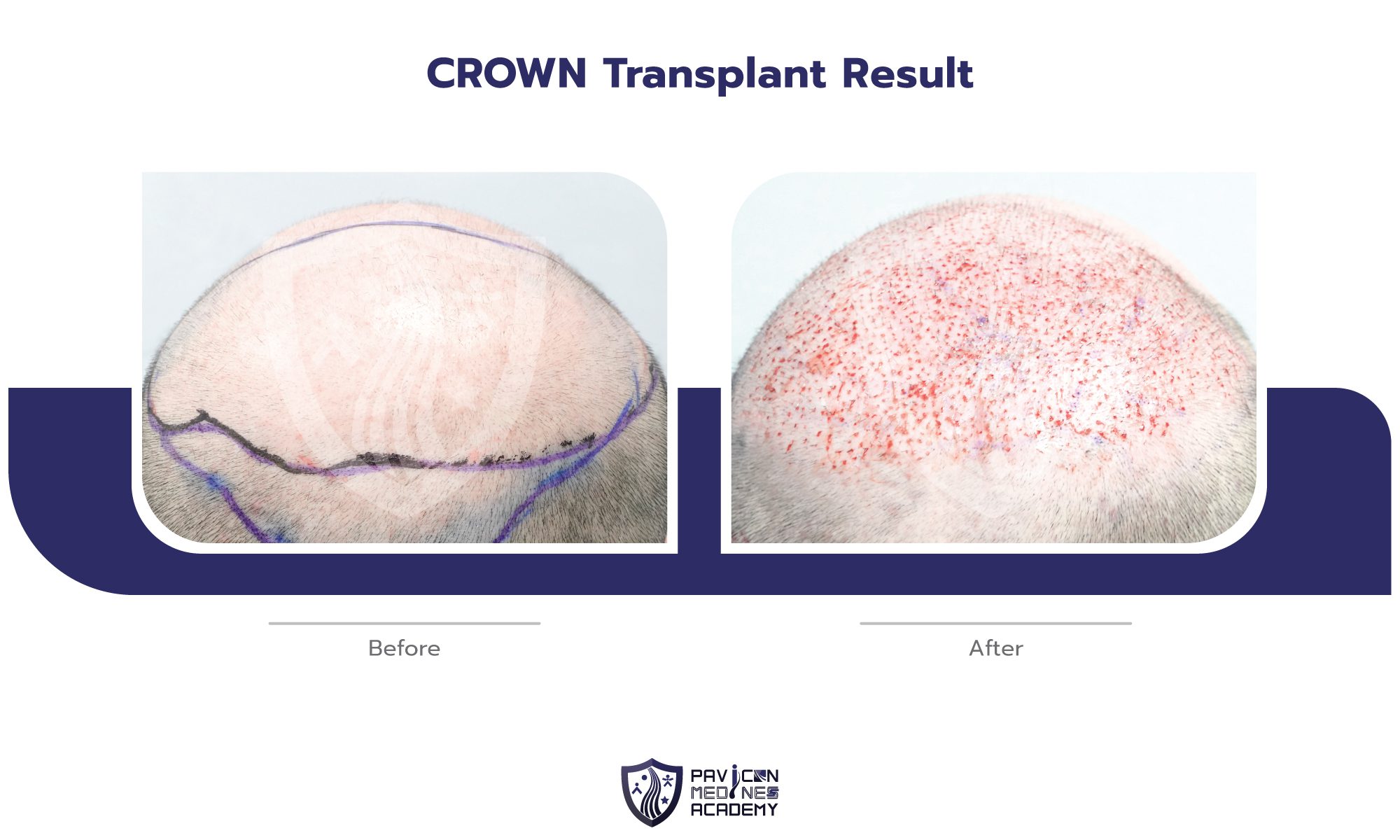Crown Hair Transplantation
Hair loss usually begins and progresses gradually but can develop rapidly. It usually takes many years and is usually noticed shortly after the onset of symptoms. The most notable sign of hair thinning in both men and women is hair loss in the crown area. In this article, we will discuss the effective methods for treating baldness in the crown area as well as inappropriate ones.
What is the Crown Area?
The crown is the topmost of the skull located towards the back of the head. Balding in the crown area is commonly referred to as the “monk’s bald head”. It involves a high degree of hair loss at the top of the head and is noticeable from a bird’s eye view.
Hair Thinning in the Crown Area
In most cases, hair thinning in the crown area is considered androgenic alopecia and can lead to different forms of hair loss. In some people, it usually starts from receding hairline and some people may also experience hair loss in the middle of the crown. If it is left untreated, the thinning area can become a tonsure. However, there are other causes of this type of hair loss, such as alopecia areata or circular hair loss caused by destruction of the hair follicles by the immune system. Therefore, examination is necessary for effective prevention and treatment of hair loss and hair thinning.
According to Hamilton-Norwood Scale, hair loss in the crown area is observed in people with Norwood scale stage 3 or higher.
According to the current hair transplant study, the majority of patients with an interest in getting hair restoration have a Norwood scale stage 4. Men with a high testosterone level are more likely to suffer from hair loss at an early age and develop a tonsure. Not only men, this condition also affects women. In severe cases, it can progress into compete baldness.
Our Advice
To find the best treatment for your hair loss problem, you should seek professional advice or do our online analysis (takes only 1 minute). Our online analysis for hair loss problem will provide your results along with the initial treatment options for your conditions.
Hair Loss Treatment in the Crown Area
General non-cosmeceutical products, such as shampoos or oils are ineffective in treating androgenetic alopecia or pattern baldness. The most and only effective solution to this type of hair loss is hair transplantation.
First, your doctor will examine your scalp and hair thoroughly to see if there are any other abnormalities and blood may be collected for blood test. You may use vitamin supplements, medications, or phototherapy or PRP to slow down hair loss or make the crown area looks fuller. However, there is no method to regenerate hair from the scalp where there are no hair follicles left, other than hair transplantation.
In addition, medications should be used with caution and under the supervision of a physician. Do not stop taking the medication on your own, otherwise your hair loss may resume.
Medications for Hair Loss in the Crown Area
In the early stages, hair loss at the back of the head can be alleviated by using hair drops and oral medications, which can delay the need to undergo hair transplantation procedure.
If he hair loss begins only at the crown area, it is recommended to start using DHT blocking shampoos. After consultation and analysis be a specialist, finasteride or minoxidil may be used.
Finasteride and minoxidil have been shown to be effective in treating hair loss, especially on the back of the head. These medications have significantly improved the appearance of hair in most cases and are also quite effective in slowing or stopping hair loss. However, in the long run, hair will become gradually thinning and falling out in many patients. It is difficult to predict when the problem will become visible and when treatment should be sought.
Crown Hair Transplantation
Hair transplant is one of the most effective and standard treatments, and is the only method to regrow new hair in areas where no hair follicles are left. This is because the hair follicles can be transplanted into the balding area using the grafts extracted from the occipital area where the hair follicles are resistant to DHT, a hormone responsible for hair loss. However, taking the medications at least one year after hair transplantation is a recommended standard approach because it has an inhibiting activity against the effects of DHT hormone on the hair follicles.
FUE and FUT are the most popular modern hair transplantation methods. In hair transplantation, the grafts must be evenly distributed and properly positioned for the best result. In addition, the hair composition and the growth direction of the existing hair must also be considered and the new hairline must be recreated in aesthetic and natural-looking manner. This requires a very complicated procedure and a lot of effort to recreate the natural swirl on the crown of the head.
Micropigmentation
In addition to a hair transplantation, scalp micropigmentation can improve your scalp appearance by making the scalp and hair look fuller and thicker in case the patient’s grafts are insufficient to cover the whole balding area. The scalp should be tattooed with a density of 30 grafts/cm2 to create a thicker and fuller appearance.
Costs of Crown Hair Transplantation
A large number of grafts is required of the area affected by hair loss is large, which resulting in relatively high cost of hair transplantation.
The total cost of hair transplantation also depends on where you get your hair transplant and the reputation of the hair surgeon. For a crown hair transplant, an average cost of a hair transplant in the UK is 202,663 Baht, while it costs only about 121,601.5 Baht in Thailand, as Thailand has a much lower wage compared to the UK.
Success Rate of Crown Hair Transplantation
Hair transplantation is the most effective method for treating hair loss in the crown area. Without medical, there will be no new hair growth regardless of whether it occurs accompanied by receding hairline.
Hair transplantation allows the hair in the affected area to regenerate and continue to grow permanently. You should be patient as it can take several months for the hair to grow noticeably.
To accelerate the recovery and wound healing processes, radiation and PRP therapy can be used combined with hair transplantation. In addition, you should pay attention to the after-care of the donor and recipient areas as it will contribute to good results of treatment.
Due to its 95% success rate, it is the most effective method to permanently conceal baldness around the crown of the head. After healing, the hair will grow according to its natural cycle. However, you should keep in mind that the areas of the scalp with no hair follicles transplanted and is not the occipital area are still sensitive to DHT and therefore should be under the supervision of a physician.
Hairline, in general, is the area particularly affected by progressive hair loss. This is one reason why most patients should not expect that hair transplants will make the hair in the crown area as thick and dense as expected if it is necessary to transplant the hair in the anterior hairline. The hairline near the front of the head is of aesthetic importance as it directly affects the contour and proportions of the face and is the first area that your interlocutor will notice and see throughout the interaction.
It is very important to recreate the natural hair whorl in the crown area, as the hair in this area is thinner than the other area and growing in a spiral direction, makes it extremely complicated to recreate. The skills and expertise of the hair surgeon greatly affects the naturalness of this new hair growth.



FAQ
Hair transplantation is a proven, effective and lasting method for covering and growing new hair in the crown area. However, it is the difficult process, especially if there is not enough hair to provide a fuller, dense appearance as desired or unqualified surgeon.
The number of hair grafts required depends on the degree of hair loss and the thickness desired by the patient. 2,600 grafts are required to cover the entire crown area and nearly 7,000 hair grafts may be required to achieve a full, youthful look the patient needs. Unfortunately, there may not be enough hair left to cover a wide balding area to achieve the desired results.
All hair transplantation methods take several months of healing before the new hair grows. Therefore, it is recommended to perform hair transplantation in combination with phototherapy and PRP therapy to accelerate the wound healing process.